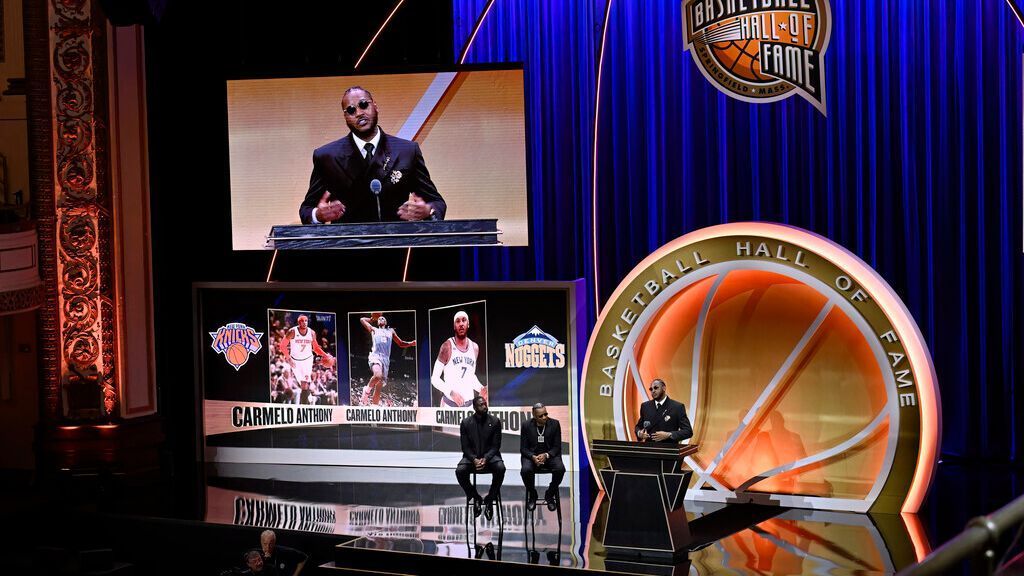
Life in the corner office might be full of ups and downs — but when it comes to the multimillion-dollar pay packages corporate chiefs get, it’s mostly up.
WWD’s annual pay study looked at nearly 50 of the largest publicly traded companies with fashion-industry ties and found 25 executives who logged pay packages valued at more than $10 million in 2024.
It is an exercise that, this year at least, cast a spotlight on the people in charge of the sector-leading giants.
David Simon, chairman, chief executive officer and president of Simon Property Group — the dominant U.S. luxury mall owner — led the list with a stock-heavy package valued at $61.3 million.
And the rest of the top five included heavyweights in their own fields, including Amazon CEO of worldwide stores Doug Herrington (with a package valued at $34.1 million), Walmart CEO Doug McMillon ($27.4 million), Ralph Lauren Corp. executive chairman and chief creative officer Ralph Lauren ($24.1 million) and TJX Cos. Inc. CEO Ernie Herrman ($23.4 million).
All together, the — let’s say Golden 25 — were paid $485 million last year, on top of the $393 million they made in 2023 — that’s a 23.5 percent increase for the tip of the U.S. fashion pay pyramid.
Much of that two-year take of $878 million is money that exists only theoretically. That’s because executive pay includes oodles of stock and option awards that only pay off if the company’s shares perform and targets are met.
And there’s really no telling how much CEOs and top executives ultimately take home once all the options are cashed in. But with a top-line figure approaching $500 million for just the top 25 earners last year, the answer would seem to be “enough.”
Even so, CEOs carry a lot of responsibility, traveling ceaselessly and coming under constant scrutiny while navigating what is currently a very dicey consumer market.
“Their jobs and what they get paid for is to keep the ship on course, but to also instill not only a positive corporate culture, but enthusiasm and inventiveness,” said Elaine Hughes, board adviser and former CEO of search firm E.A. Hughes & Co.
“Their biggest challenge is, in the past 10 years since technology has literally upended communication — how do you harness that [new technology] to enhance your brand?” Hughes said. “The other big issue is supply chain, and this was long before [trade war] tariffs were put into place. Even one of those CEOs knows it’s not like the old days where everyone rushes to China. Now it’s global sourcing.”
Executive pay stirs up a range of emotions — most often envy and outrage from outside and, on the inside, frustration from CEOs and board members setting their pay that compensation reported to the Securities and Exchange Commission doesn’t reflect take home pay and is tied to the performance of the company.
Any leadership rundown in U.S. business also underscores a continuing lack of diversity with white men holding most of the top jobs and therefore gaining most of the sweet rewards.
And while the fortunes of brands and retailers go up and down, CEO pay seems to keep going higher.
Twenty years ago, Simon made only $814,179 while building his mall company, no one at Amazon made more than $8 million and Walmart’s CEO registered pay of just over $12 million. Lauren logged more than $17.8 million in compensation in 2004. But the CEO of TJX at the time made less than $3 million.
The job of running all of those businesses has only become more complex over the last two decades, but CEO compensation has been on a kind of steady march higher in part to how corporate boards set pay.
The process starts with a review of compensation at a company’s peers.
Wanting to run with the pack, boards then look to set the pay for their CEO at the median of that group for the following year.
That gives the appearance that they’re targeting a kind of market-decided middle. But going for the median skews pay over time.
“Invariably, that’s just going to push that median up and up because by definition, when you’re targeting the median, half of the companies should be higher and half should be lower,” said Roy Saliba, managing director at ISS-Corporate, the Rockville, Md., data and analytics provider. “But if everyone is doing the median, then over time, that just continues to creep up.”
So some of the increase in CEO pay packages is “mechanical,” according to Saliba, “but some of it is really just related to performance. As companies grow, you expect pay to grow for the position. And then the question always is — is it appropriate?
“Is the increase appropriate relative to the performance that the company is delivering?” he said. “There’s no simple answer to that question.”
But Saliba did have a way to start: By stacking the change in CEO pay against their company’s total shareholder return.
ISS analyzed 151 fashion and related companies in the Russell 3000, looking only at CEOs who had been in the top job for at least the last two years.
The study found that median CEO pay rose 6.3 percent to $8.2 million last year. Looking at the medians, salaries were up 2 percent, bonuses were generally flat, stock awards rose 6.2 percent and options, when granted, increased by 2.9 percent. Against that, the stock market performance of the companies resulted in an 8.9 percent increase in total shareholder return.
So shareholder return grew slightly faster than pay last year, giving the growth rates a certain symmetry.
That leaves just the raw size of the typical CEO pay package, which boards, employees, competitors, customers and everyone else still has to get their head around.
#485M #Top






